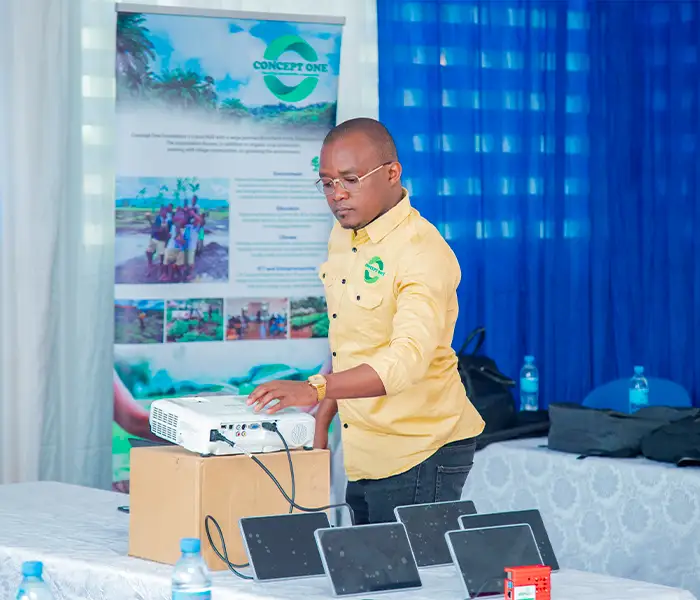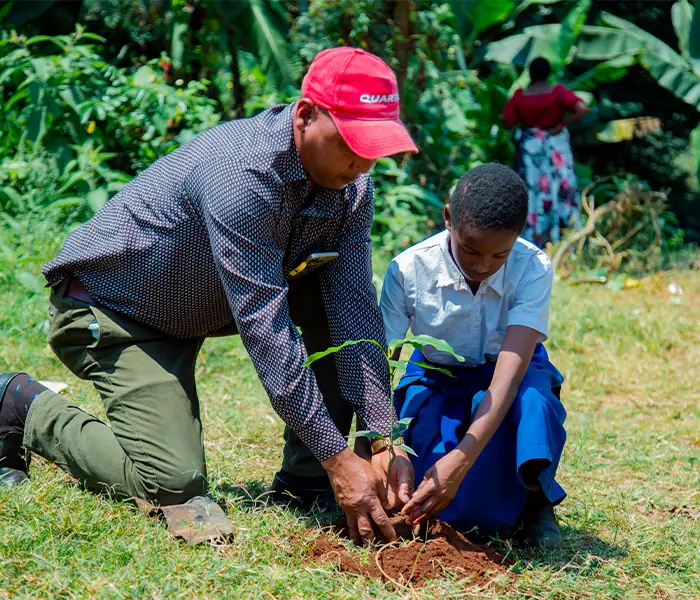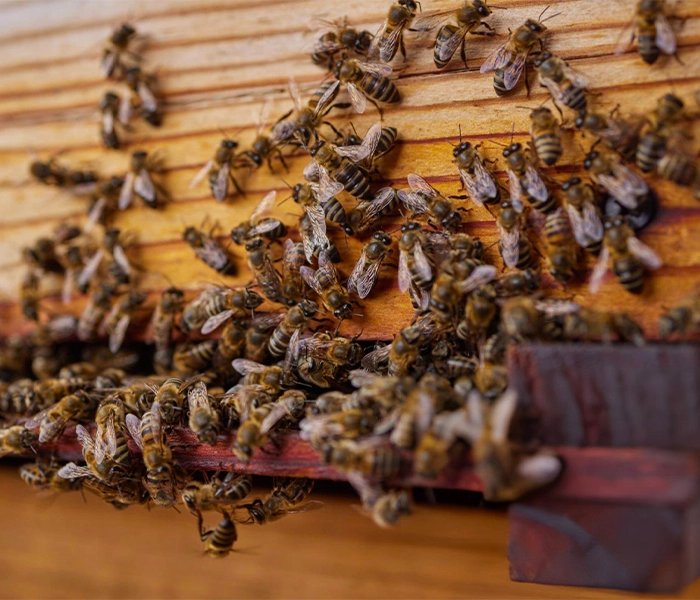we@concept1.org | support@concept1.org | +255766249920
- ICT and Training
Using technology to protect nature
You apply information and communication technology to everyday conservation. You collect reliable data from sensors, satellite imagery and community reports. You turn that data into clear maps, alerts and decisions that protect forests, water and biodiversity.
BENEFITS:
Faster detection of illegal activity and environmental hazards.
Better targeting of restoration and protection effort.
Increased community ownership of local resources.
Evidence for policy and funding decisions.

Tablets learning for environmental education
You give students access to curriculum-aligned environmental lessons on durable tablets. Content works offline, adapts to local language and focuses on hands-on learning: tree planting, waste sorting, water testing and biodiversity surveys.
BENEFITS:
Consistent access to quality environmental content in remote areas.
Active learning that links classroom theory to local action.
Teacher capacity building and ongoing support.
Data on learning outcomes and environmental projects.

Smart Beehives and Technology
You combine simple sensors with practical beekeeping to protect pollinators. Sensors record temperature, humidity and hive acoustics; you receive alerts for swarming, pests or extreme conditions. Data helps beekeepers act early and supports landscape-level pollinator conservation.
BENEFITS:
Improved hive survival and beekeeper income.
Better pollination for crops and wild plants.
Early detection of pests and disease.
Community science contributions to pollinator research.

